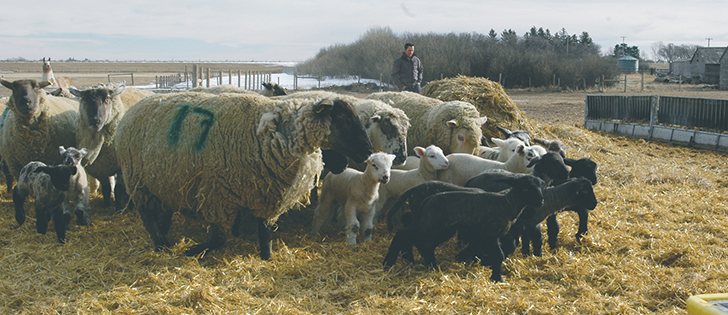Alberta lamb prices are projected to remain stable, supported by tight supplies and limited growth in herd size and in consumer demand.
A similar situation exists around the world, where flocks are not growing and demand for lamb is flat, Jason Wood, a livestock market analyst at Alberta Agriculture, said in a recent webinar.
“Consumption of lamb remains flat here and in the U.S., but it is also flat globally,” he said.
Global per capita consumption is about 1.5 kilograms, although demand is picking up in China, which has become the world’s largest importer of lamb.
Read Also

VIDEO: Ag in Motion documentary launches second season
The second season of the the Western Producer’s documentary series about Ag in Motion launched Oct. 8.
The Canadian flock is not growing, according to the most recent Statistics Canada livestock report.
The number of sheep fell by 1.4 percent to 814,600 from last year as farmers across most of Canada reduced flocks. The sheep breeding herd decreased, but the number of market lambs increased.
Ontario has the largest flock at 249,900 followed by Quebec at 198,000 and Alberta at 128,000.
Lamb markets are affected by the supply and price of competing meats as well as outside forces such as mandatory country-of-origin labelling in the United States and drought in Australia and United States, where there were higher levels of culls than normal in recent years.
Canadian prices have improved in the last few years.
Cash receipts for 2015 show Alberta producers enjoyed a 37 percent increase over the year before for lamb and sheep while there was a 16 percent increase across Canada.
“If you look at the five year average, we are still 28 percent higher,” Wood said.
“Lamb receipts are still doing quite well but will be down slightly in 2016. That is part of that softer prices at the end of 2016.”
Ontario lamb prices were on average 29 percent higher than Alberta last year. Wood forecasts the average Alberta price this year should be around $225 per head.
While there is no growth in herd numbers, lamb carcasses are heavier and better quality.
Slaughter happens at the provincial and federal inspection levels.
Total slaughter in provincial plants in 2016 across Canada was 361,000, down about 6.5 percent since 2015.
Federal slaughter rose.
“In the West we saw quite a dramatic increase of about 24 percent year-over-year, whereas in the East we saw a decline of about six percent,” he said.
Live exports are down to about 14,000 head, partly because of the U.S. country-of-origin labelling law. Lamb was not included when the World Trade Organization ruled COOL was unfair to the Canadian and Mexican cattle and hog sectors.
Simultaneously, there were no imports of live sheep from the U.S. in 2016. The lower Canadian dollar made imported animals less attractive, and shrinking flocks meant the U.S. needed to keep its domestic production.
The biggest import year was 2008 when about 40,000 head came in.
Canadian producers supply about 45 percent of the domestic lamb market, but imports of meat were down three percent last year. Most comes from the U.S., Australia and New Zealand.
However, increasing demand from China affects the flow of all meat, including lamb exports from the large producers.
“Our imports from New Zealand were down 13 percent, and from the U.S. they were down 10 percent in 2016,” he said.
Australian lamb to Canada went up about 2.5 percent.
Canadian lamb meat exports reached 400 tonnes in 2013, but that fell to about 150 tonnes by 2014, which is closer to the five year average.
Retail prices are holding, but the increased supply of chicken, pork and beef may prompt consumers to substitute their meat purchases.
However, the growing ethnic market in Canada may give the lamb business a boost.
Producers need to be aware of various holiday seasons when lamb is popular. Lamb demand goes up during the Christian Easter and Muslim Ramadan holidays. However, these holidays move around on the calendar, so demand comes at different times of the year.
Ramadan begins the evening of May 26 this year.


















